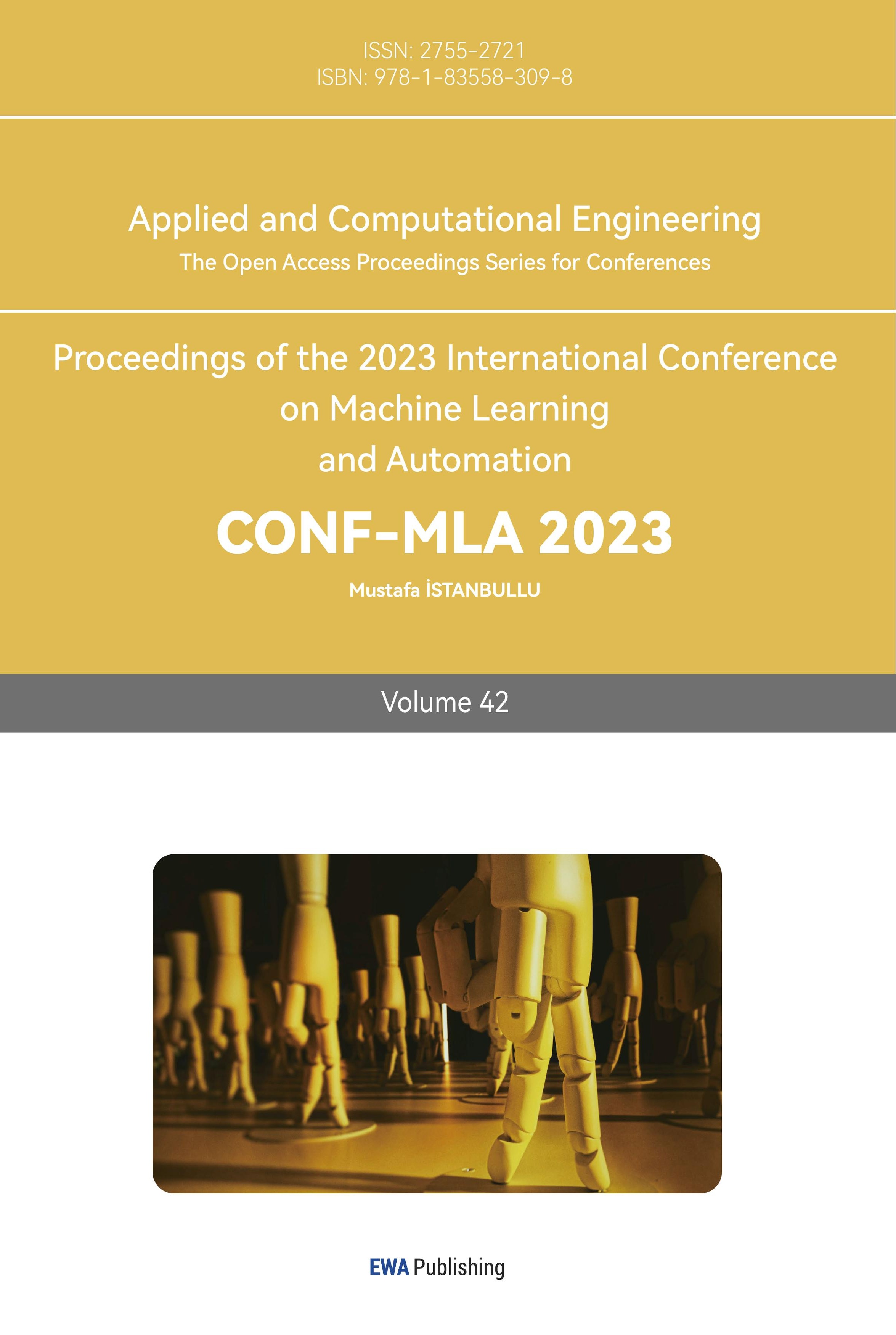References
[1]. B. Federick.” Myron Krueger.” PHWORKS.com.http://thedigitalage.pbworks.com/w/page/22039083/Myron%20Krueger (accessed Nov. 23, 2009).
[2]. E. Bozkir, “Towards Everyday Virtual Reality through Eye Tracking,” arXiv.org, Mar. 2022.
[3]. Han et al,” Patent analysis of augmented reality/virtual reality on head mounted display,” Hebei Journal of Industrial Science & Technology, vol. 34, no. 5, pp. 345–353, 2017.
[4]. P. Majaranta and A. Bulling, Gaze Interaction and Applications of Eye Tracking: Advances in Assistive Technologies. IGI Global, 2011.
[5]. A. D. Souchet, S. Philippe, D. Lourdeaux, and L. Leroy, “Measuring Visual Fatigue and Cognitive Load via Eye Tracking while Learning with Virtual Reality Head-Mounted Displays: A Review,” International Journal of Human–Computer Interaction, vol. 38, no. 9, pp. 1–24, Sep. 2021.
[6]. S. Stadler, H. Cornet, and F. Frenkler, “Assessing Heuristic Evaluation in Immersive Virtual Reality—A Case Study on Future Guidance Systems,” Multimodal Technologies and Interaction, vol. 7, no. 2, pp. 19, Feb. 2023.
[7]. X. Lou, X. A. Li, P. Hansen, and P. Du, “Hand-adaptive user interface: improved gestural interaction in virtual reality,” Virtual Reality, vol. 25, no. 2, pp. 367–382, Jul. 2020.
[8]. M. Lui, Kwok Ying Chong, M. Mullally, and R. McEwen, “Facilitated model-based reasoning in immersive virtual reality: Meaning-making and embodied interactions with dynamic processes,” International Journal of Computer-supported Collaborative Learning, vol. 18, no. 2, pp.203-230, Aug. 2023.
[9]. L.Cao, H. Zhang, C. Peng, and J. T. Hansberger, “Real-time multimodal interaction in virtual reality - a case study with a large virtual interface,” Multimedia Tools and Applications, vol. 82, no. 16, pp. 25427–25448, Feb. 2023.
[10]. R. Rao, T. Conn, S. Jung, J. Katupitiya, T. Kientz, V. Kumar, J. Ostrowski, S. Patel, C. Taylor, “Human robot interaction: application to smart wheelchairs,” Scholarly Commons (University of Pennsylvania), Jun. 2003.
[11]. D. Guttentag, “Virtual reality: Applications and implications for tourism,” Tourism Management, vol. 31, no. 5, pp. 637–651, Oct. 2010.
Cite this article
Tang,J.;Gong,M.;Jiang,S.;Dong,Y.;Gao,T. (2024). Multimodal human-computer interaction for virtual reality. Applied and Computational Engineering,42,201-207.
Data availability
The datasets used and/or analyzed during the current study will be available from the authors upon reasonable request.
Disclaimer/Publisher's Note
The statements, opinions and data contained in all publications are solely those of the individual author(s) and contributor(s) and not of EWA Publishing and/or the editor(s). EWA Publishing and/or the editor(s) disclaim responsibility for any injury to people or property resulting from any ideas, methods, instructions or products referred to in the content.
About volume
Volume title: Proceedings of the 2023 International Conference on Machine Learning and Automation
© 2024 by the author(s). Licensee EWA Publishing, Oxford, UK. This article is an open access article distributed under the terms and
conditions of the Creative Commons Attribution (CC BY) license. Authors who
publish this series agree to the following terms:
1. Authors retain copyright and grant the series right of first publication with the work simultaneously licensed under a Creative Commons
Attribution License that allows others to share the work with an acknowledgment of the work's authorship and initial publication in this
series.
2. Authors are able to enter into separate, additional contractual arrangements for the non-exclusive distribution of the series's published
version of the work (e.g., post it to an institutional repository or publish it in a book), with an acknowledgment of its initial
publication in this series.
3. Authors are permitted and encouraged to post their work online (e.g., in institutional repositories or on their website) prior to and
during the submission process, as it can lead to productive exchanges, as well as earlier and greater citation of published work (See
Open access policy for details).
References
[1]. B. Federick.” Myron Krueger.” PHWORKS.com.http://thedigitalage.pbworks.com/w/page/22039083/Myron%20Krueger (accessed Nov. 23, 2009).
[2]. E. Bozkir, “Towards Everyday Virtual Reality through Eye Tracking,” arXiv.org, Mar. 2022.
[3]. Han et al,” Patent analysis of augmented reality/virtual reality on head mounted display,” Hebei Journal of Industrial Science & Technology, vol. 34, no. 5, pp. 345–353, 2017.
[4]. P. Majaranta and A. Bulling, Gaze Interaction and Applications of Eye Tracking: Advances in Assistive Technologies. IGI Global, 2011.
[5]. A. D. Souchet, S. Philippe, D. Lourdeaux, and L. Leroy, “Measuring Visual Fatigue and Cognitive Load via Eye Tracking while Learning with Virtual Reality Head-Mounted Displays: A Review,” International Journal of Human–Computer Interaction, vol. 38, no. 9, pp. 1–24, Sep. 2021.
[6]. S. Stadler, H. Cornet, and F. Frenkler, “Assessing Heuristic Evaluation in Immersive Virtual Reality—A Case Study on Future Guidance Systems,” Multimodal Technologies and Interaction, vol. 7, no. 2, pp. 19, Feb. 2023.
[7]. X. Lou, X. A. Li, P. Hansen, and P. Du, “Hand-adaptive user interface: improved gestural interaction in virtual reality,” Virtual Reality, vol. 25, no. 2, pp. 367–382, Jul. 2020.
[8]. M. Lui, Kwok Ying Chong, M. Mullally, and R. McEwen, “Facilitated model-based reasoning in immersive virtual reality: Meaning-making and embodied interactions with dynamic processes,” International Journal of Computer-supported Collaborative Learning, vol. 18, no. 2, pp.203-230, Aug. 2023.
[9]. L.Cao, H. Zhang, C. Peng, and J. T. Hansberger, “Real-time multimodal interaction in virtual reality - a case study with a large virtual interface,” Multimedia Tools and Applications, vol. 82, no. 16, pp. 25427–25448, Feb. 2023.
[10]. R. Rao, T. Conn, S. Jung, J. Katupitiya, T. Kientz, V. Kumar, J. Ostrowski, S. Patel, C. Taylor, “Human robot interaction: application to smart wheelchairs,” Scholarly Commons (University of Pennsylvania), Jun. 2003.
[11]. D. Guttentag, “Virtual reality: Applications and implications for tourism,” Tourism Management, vol. 31, no. 5, pp. 637–651, Oct. 2010.









